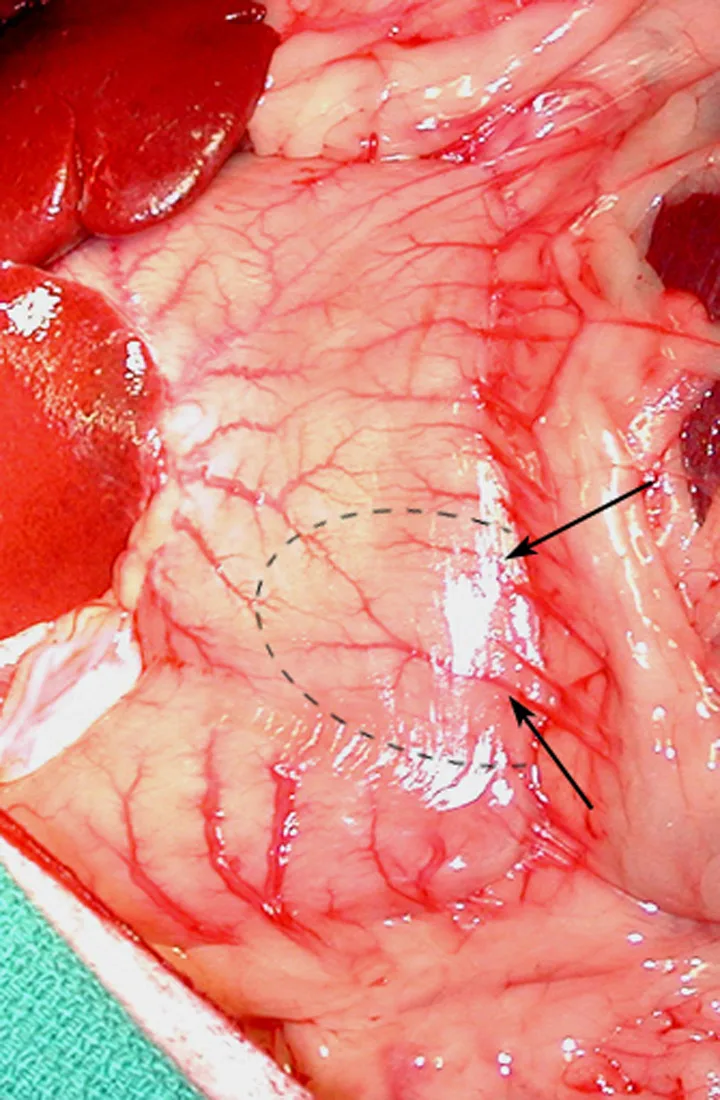Belt-Loop Gastropexy for Gastric Dilatation Volvulus

Gastropexy is part of the surgical treatment of gastric dilatation volvulus (GDV) in dogs. If not performed, the rate of recurrence of GDV is as high as 80%.1
The procedure creates a permanent adhesion between the pyloric antrum and the right abdominal wall. Several techniques of gastropexy have been described in the literature: incisional, circumcostal,3 and belt-loop.4 There are other gastropexy techniques, but each of the techniques mentioned have been shown to be clinically effective and provide sufficient adhesions between the stomach and abdominal walls. The circumcostal is the strongest of the techniques that have been measured, but it is the most technically difficult to perform and the minimal strength required to prevent recurrence of GDV is unknown. The technique I prefer to use for the treatment of GDV is the belt-loop, a straightforward procedure that creates a strong gastropexy.
STEP BY STEP BELT-LOOP GASTROPEXY

Step 1.
Create a seromuscular flap based along the greater curvature of the stomach to secure the pyloric antrum to the right abdominal wall. The flap should extend past the midline, between the greater and lesser curvature of the stomach. It is recommended to have at least 2 to 3 branches of the gastroepiploic artery (arrows) incorporated in the base of the flap in order to improve the flap's survival.